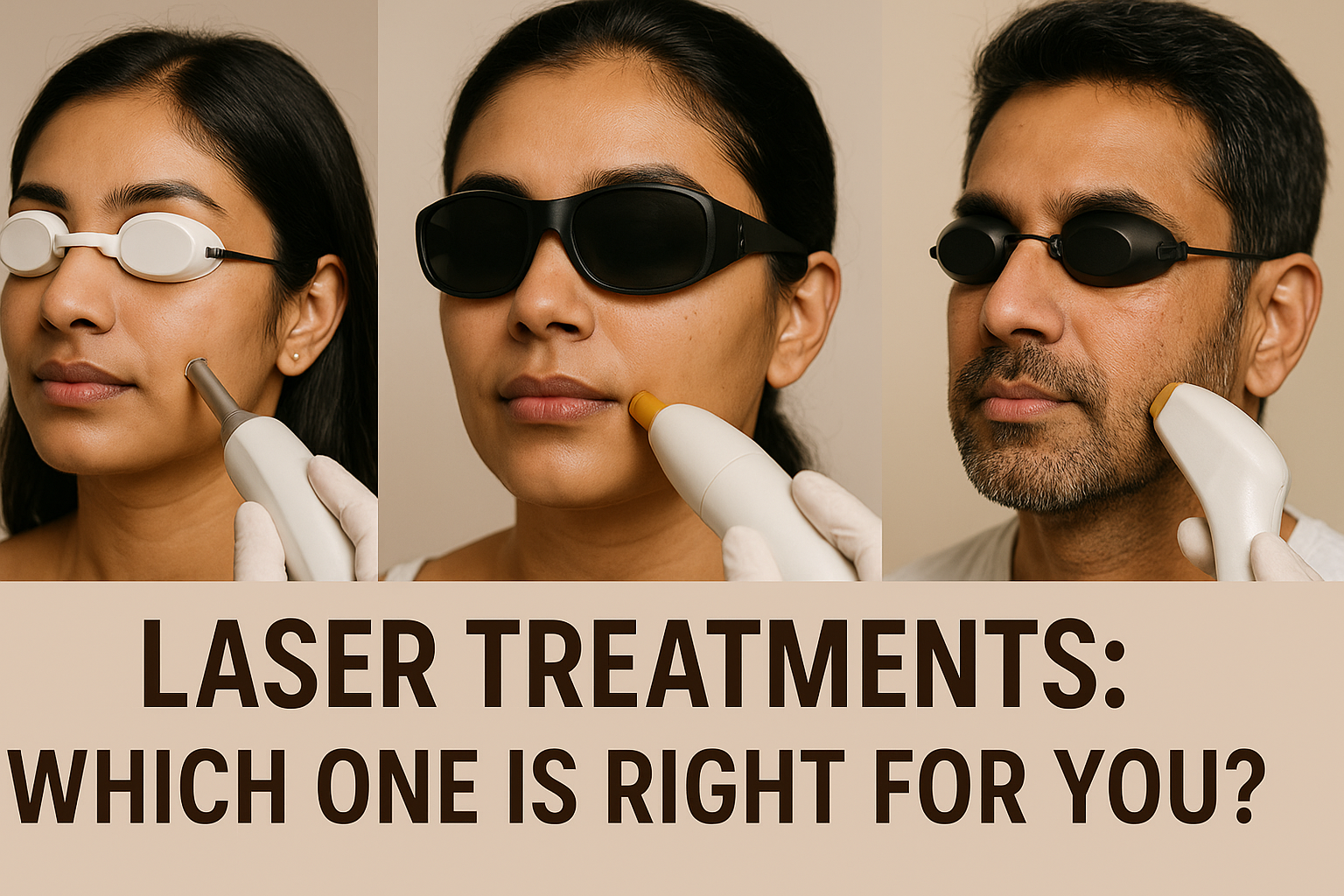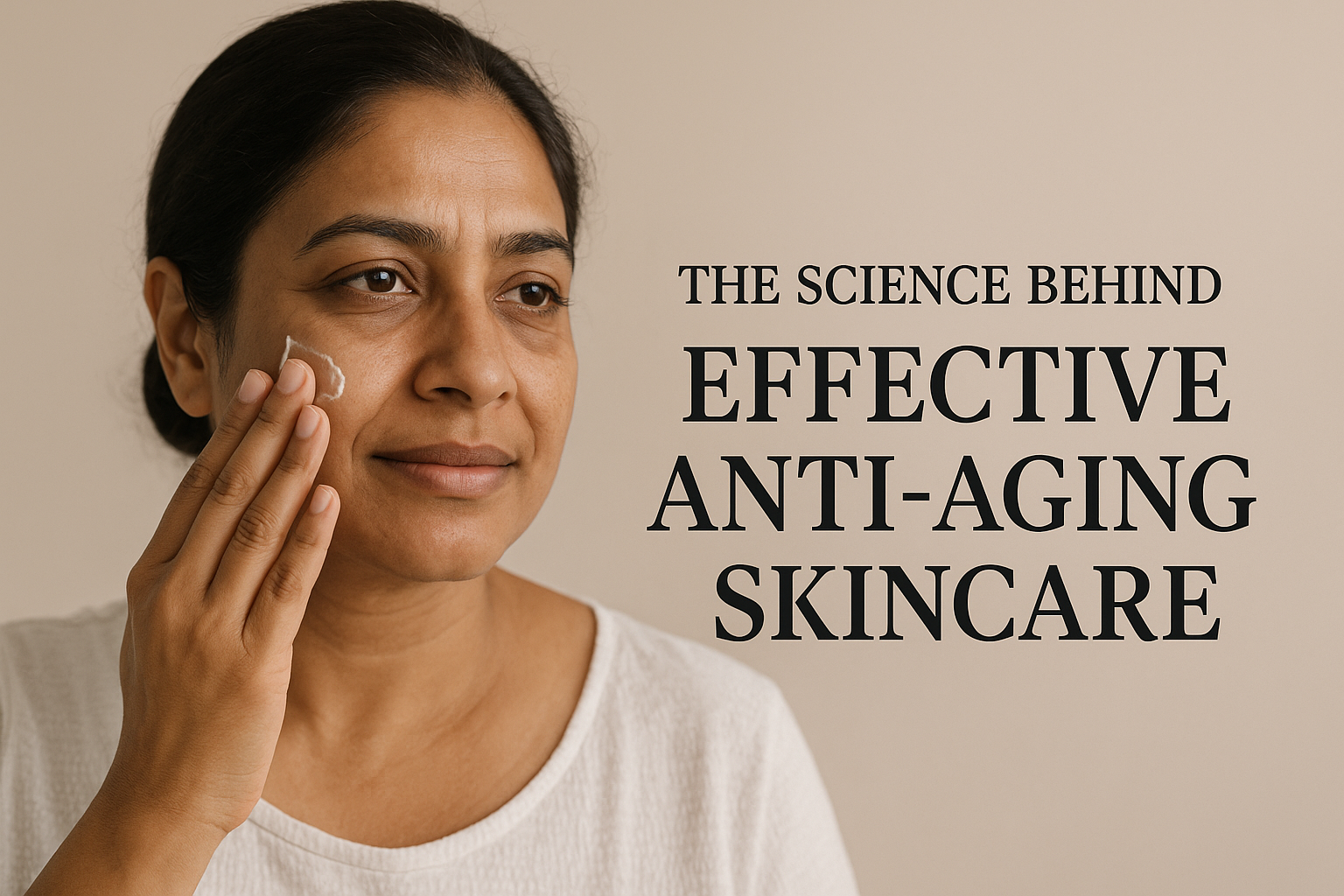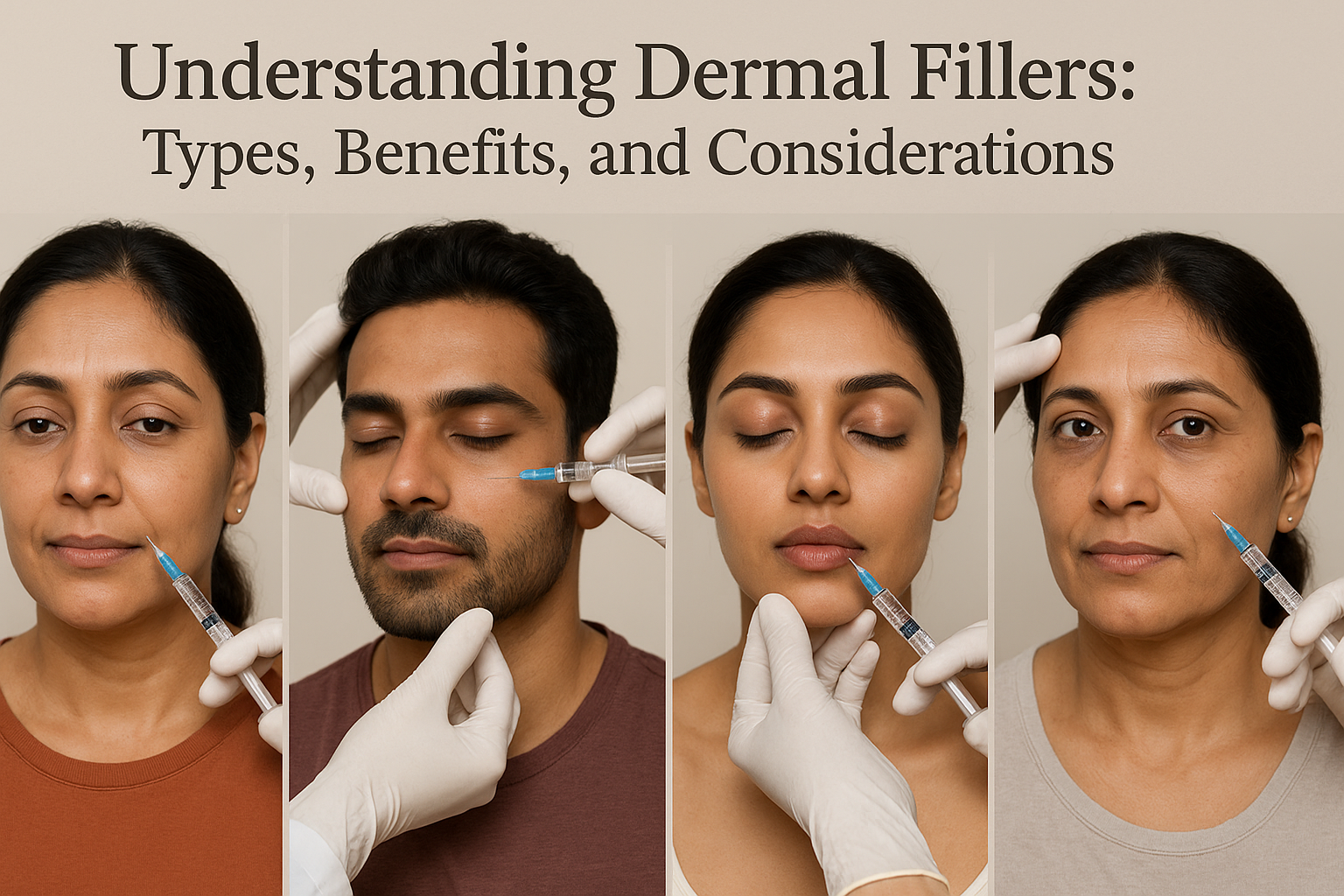Laser treatments have revolutionized dermatology, offering solutions for a wide range of skin concerns from aging and sun damage to scars and unwanted hair. With so many options available, choosing the right laser treatment can be overwhelming. In this comprehensive guide, I'll break down the different laser technologies, their specific benefits, and how to determine which one is most suitable for your unique skin concerns.
Understanding Laser Technology
Before diving into specific treatments, it's helpful to understand how lasers work. The term "LASER" is actually an acronym for Light Amplification by Stimulated Emission of Radiation. In simple terms, lasers deliver focused light energy to target specific structures in the skin while minimizing damage to surrounding tissues.
Lasers work on the principle of selective photothermolysis, meaning they can selectively target specific chromophores (color-bearing molecules) in the skin:
- Melanin (responsible for skin and hair color)
- Hemoglobin (found in blood vessels)
- Water (component of all cells)
By targeting these chromophores with specific wavelengths of light, lasers can address various concerns like pigmentation, vascular lesions, and skin texture issues.
Types of Laser Treatments
Laser treatments are broadly categorized based on how they interact with the skin:
Ablative Lasers
Ablative lasers remove the outer layers of skin, resulting in more dramatic results but also requiring more downtime.
Examples include:
- CO2 (Carbon Dioxide) Lasers: The gold standard for treating deep wrinkles, scars, and significant sun damage
- Erbium:YAG Lasers: More gentle than CO2, with slightly less downtime but still effective for moderate wrinkles and skin resurfacing
Best for: Moderate to severe wrinkles, significant sun damage, deeper acne scars, skin laxity
Downtime: 1-2 weeks of significant healing, with redness potentially lasting several weeks
Non-Ablative Lasers
Non-ablative lasers heat the underlying skin tissue without damaging the surface, stimulating collagen production and improving skin tone with minimal downtime.
Examples include:
- Nd:YAG Lasers: Excellent for treating vascular lesions and for skin tightening
- Diode Lasers: Often used for hair removal and some vascular conditions
- Pulsed Dye Lasers (PDL): Specifically target blood vessels for conditions like rosacea, port wine stains, and spider veins
Best for: Mild to moderate skin concerns, redness, broken capillaries, unwanted hair
Downtime: Minimal to none, possibly some redness for 24-48 hours
Fractional Lasers
Fractional lasers treat a fraction of the skin at a time, creating thousands of microscopic treatment zones while leaving surrounding tissue intact for faster healing.
Examples include:
- Fractional CO2: An ablative fractional approach with less downtime than traditional CO2
- Fraxel®: Available in both ablative and non-ablative versions
- Picosecond Lasers: Deliver energy in ultra-short pulses, reducing heat damage
Best for: A wide range of concerns including moderate wrinkles, pigmentation, acne scars, and overall texture improvement
Downtime: 3-7 days for ablative fractional, 1-3 days for non-ablative fractional
IPL (Intense Pulsed Light)
While not technically a laser, IPL is often grouped with laser treatments. It uses broad-spectrum light to target multiple concerns simultaneously.
Best for: Pigmentation, redness, sun damage, and photo-aging
Downtime: Minimal, with some redness and potential darkening of pigmented spots before they fade
It's worth noting that IPL is generally less precise than true lasers but can be very effective for addressing multiple concerns in a single treatment.
Common Conditions Treated
Laser and light therapies can effectively address numerous skin concerns:
Pigmentation Issues
- Melasma: Best treated with low-energy fractional devices or Nd:YAG
- Sun spots/age spots: Respond well to IPL, Q-switched lasers, or picosecond lasers
- Post-inflammatory hyperpigmentation: Often treated with gentle fractional lasers
Vascular Conditions
- Rosacea/facial redness: Pulsed dye laser or IPL
- Spider veins: Nd:YAG or pulsed dye lasers
- Cherry angiomas: Pulsed dye laser or IPL
Textural Issues
- Fine lines and wrinkles: Ablative, fractional, or non-ablative lasers depending on severity
- Acne scars: Fractional CO2, Er:YAG, or radiofrequency microneedling with laser
- Enlarged pores: Fractional lasers or non-ablative resurfacing
Unwanted Hair
- Laser hair removal: Alexandrite, diode, or Nd:YAG lasers depending on skin type
Other Concerns
- Tattoo removal: Q-switched or picosecond lasers
- Stretch marks: Fractional lasers or radiofrequency with microneedling
- Surgical or traumatic scars: Fractional CO2 or pulsed dye laser
How to Choose the Right Laser Treatment
Selecting the appropriate laser treatment depends on several factors:
Skin Type
The Fitzpatrick skin type scale (I-VI) is crucial for laser selection. Darker skin types (IV-VI) have more melanin and require specific wavelengths to avoid complications like hyperpigmentation or hypopigmentation.
For fairer skin (Types I-III): Most laser options are suitable, with less risk of pigmentary changes.
For darker skin (Types IV-VI): Specific lasers like Nd:YAG, certain diode lasers, and specialized fractional devices are safer options.
Specific Concerns
As mentioned in the conditions section, certain lasers are better suited for specific concerns. A consultation with a dermatologist will help determine the optimal approach for your particular issue.
Downtime Considerations
Your lifestyle and availability for recovery time will play a significant role in selecting the appropriate treatment:
- No downtime needed: Non-ablative lasers, gentle IPL
- Minimal downtime (1-3 days): Non-ablative fractional lasers, moderate IPL
- Moderate downtime (3-7 days): Fractional ablative lasers
- Significant downtime (7+ days): Traditional ablative lasers
Budget Constraints
Cost is inevitably a factor. While ablative treatments tend to be more expensive per session, they might require fewer sessions. Non-ablative treatments are typically less expensive per session but may require a series of 3-6 treatments for optimal results.
Preparing for Your Treatment
Proper preparation can significantly impact the safety and efficacy of your laser treatment:
Pre-Treatment Guidelines
- Sun exposure: Avoid sun exposure, tanning beds, and self-tanners for at least 2-4 weeks before treatment
- Retinoids and exfoliants: Discontinue use 5-7 days before treatment
- Medications: Inform your provider about all medications, particularly photosensitizing drugs
- Skin condition: Postpone treatment if you have active infections, cold sores, or inflammatory acne
Some providers may recommend pre-treating with hydroquinone or other lightening agents for patients prone to hyperpigmentation.
Post-Treatment Care
Following proper post-treatment protocols is essential for optimal healing and results:
General Aftercare
- Sun protection: Diligent use of broad-spectrum SPF 30+ is crucial
- Gentle cleansing: Use mild, non-irritating cleansers
- Moisturize: Keep the skin well-hydrated to support healing
- Avoid heat: Stay away from saunas, hot tubs, and strenuous exercise during the initial healing period
- Skip exfoliation: Avoid scrubs, acids, and other exfoliants until fully healed
Special Considerations
Each laser type may have specific aftercare requirements, which your provider will detail. For example:
- Ablative lasers: May require specialized wound care products and more intensive moisture
- IPL: Dark spots may initially appear darker before shedding
- Vascular lasers: Bruising is common and typically resolves within 7-10 days
Always follow your dermatologist's specific instructions for post-treatment care to minimize side effects and maximize results.
Setting Realistic Expectations
Understanding what laser treatments can and cannot achieve is crucial for satisfaction with your results:
Number of Treatments
Most non-ablative treatments require multiple sessions (typically 3-6) spaced several weeks apart. Even ablative procedures may need to be repeated for optimal results, especially for severe concerns.
Timeline for Results
While some improvements may be visible immediately after healing, many laser benefits develop gradually:
- Pigmentation: Often improves within 1-3 weeks
- Vascular lesions: May resolve within 2-4 weeks
- Texture and wrinkles: Collagen remodeling continues for 3-6 months after treatment
Maintenance
Results are not permanent. Depending on the condition treated and your lifestyle factors (especially sun exposure), maintenance treatments may be necessary every 6-12 months.
Potential Side Effects
All laser treatments carry some risk of side effects, including:
- Temporary redness, swelling, and sensitivity
- Potential for pigmentary changes (especially in darker skin tones)
- Rare but possible scarring or infection
Choosing a board-certified dermatologist with experience in laser procedures significantly reduces these risks.
Conclusion
Laser treatments offer remarkable solutions for a wide range of skin concerns, but choosing the right one requires careful consideration of your skin type, specific concerns, desired downtime, and budget. A personalized consultation with a dermatologist is the best way to determine the optimal approach for your unique needs.
Remember that the most effective skin rejuvenation strategies often combine various modalities, including lasers, topical treatments, and good skincare practices. Your dermatologist can help design a comprehensive plan to achieve and maintain your skin goals.
If you're considering laser treatment, I invite you to schedule a consultation at Epicorium Skin Clinic to discuss which options would be most suitable for your specific concerns and skin type.
Disclaimer: This article provides general information and is not intended as medical advice. Individual results may vary. A personal consultation is necessary to determine the most appropriate treatment for your specific condition.




